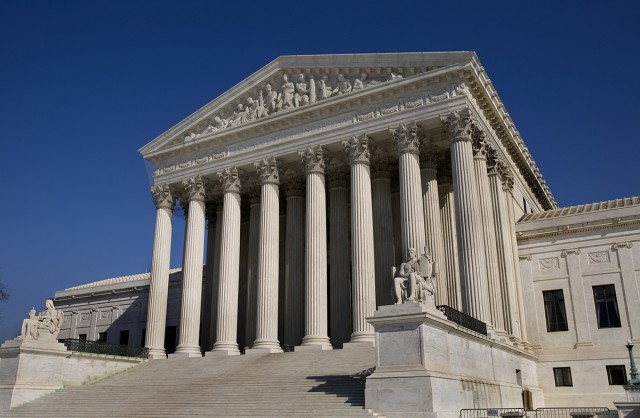Regulating Negawatts: How Does the Federal Power Act Handle Non-Sales of Electricity?
The constant evolution and increasing sophistication of modern energy markets are straining the ability of the Federal Power Act to create meaningful distinctions between state and federal regulatory jurisdiction.
The Federal Power Act provides that the federal government has exclusive jurisdiction over wholesale power sales, whereas states have exclusive jurisdiction over retail power sales. While this division of authority has endured admirably for almost a century, there is no denying that the legal framework first conceived in 1920 is now a poor match for the industry it is supposed to regulate. Not only have the divisions between wholesale and retail sales become blurred, but conservation efforts have raised new legal questions concerning the jurisdiction over non-sales of electricity.
In this case, the battle lines have been drawn around the federal regulation of demand response programs. In this context, demand response refers broadly to the ability and the willingness of retail electricity customers to adjust their consumption of electricity, based on wholesale price signals. To take a simple example, an effective demand response program would incentivize retail customers to reduce consumption at a time when electricity is the most expensive to produce — for example, during peak hours when less-efficient generating plants have been dispatched. This retail load shedding can have a direct affect on the cost, reliability and environmental impact of wholesale power markets.
In the conservation world, these megawatts of reduced retail demand are affectionately known as “negawatts.”
The problem with demand response is that most individual retail customers are neither willing nor able to reduce their consumption based on wholesale price signals. Retail customers are, by and large, insulated from wholesale price signals by operation of their retail tariffs. Even if retail customers did know when wholesale generation is least efficient, they often lack the economic incentive to adapt to it. Finally, even if the average retail customer were willing and able to adjust their consumption based on wholesale price signals, their individual response would be too small to have any discernible affect on the underlying forces driving the wholesale markets.
This is where aggregators come in. Aggregators seek to overcome the limitations inherent in retail demand response programs by recruiting large numbers of retail customers to respond in a coordinated fashion to wholesale price signals. At the direction of a participating utility, Independent System Operator (ISO) or Regional Transmission Organization (RTO), an aggregator can respond to wholesale price signals by directly controlling the consumption of many retail consumers at once. Thus, the demand response would not be measured in individual kilowatts but in megawatts. In the conservation world, these megawatts of reduced retail demand are affectionately known as “negawatts.”
In 2011, the Federal Energy Regulatory Commission (FERC) sought to give demand response a boost in order to accelerate conservation and reduce retail consumption of electricity. FERC Order 745 requires ISOs and RTOs, which are already subject to FERC’s jurisdiction, to pay aggregators the same amount by volume as the ISO, or RTO would pay a generation provider. In simple terms, FERC Order 745 requires federally regulated markets to compensate aggregators for negawatts the same way that they compensate generators for megawatts.
A group of wholesale power generators, known as the Electric Power Supply Association, sought judicial review of FERC Order 745 before the D.C. Circuit Court of Appeals. The petitioners argued, among other things, that FERC lacked jurisdiction to issue Order 745 because it directly affects retail power sales in violation of the time-honored jurisdictional lines drawn by the Federal Power Act. The Circuit Court agreed, and held that Order 745 is void. The Circuit Court found that “[d]emand response — simply put — is part of the retail market. It involves retail customers, their decision whether to purchase at retail, and the levels of retail electricity consumption.” (Emphasis in the original).
FERC subsequently appealed the Circuit Court’s decision, and the matter is now pending before the United States Supreme Court. Oral argument for the case was heard by the Court on October 14 of last year. In its written and oral arguments before the Supreme Court, FERC emphasized that the regulation of demand response falls into the cracks between regulating wholesale sales and regulating retail sales. FERC lawyers reminded the Supreme Court that, under prior case law, an agency is to be given deference in its interpretation of its own authority, unless its interpretation is clearly prohibited by the plain language of the statute. FERC argues that its jurisdiction is not clearly prohibited in this case because demand response is a non-sale — and thus cannot be a retail sale within the exclusive jurisdiction of the states.
In analyzing the case, the one thing all parties seem to agree upon is the direct link between retail and wholesale markets. It is virtually impossible to regulate one without directly affecting the other.
Regardless of how FERC ultimately decides this particular case, the demand response debate highlights the inability of the 100-year-old Federal Power Act to keep pace with changing markets and technologies. There is no longer a clear division between retail and wholesale sales. As conservation programs evolve, the difference between sales and non-sales will also stress traditional jurisdictional lines.
The Supreme Court’s decision in this case likely will also determine whether federal or state regulators get to regulate other non-sales of electricity to retail consumers. This particular issue is important because it could shape the future regulation of utility-scale battery storage technology. The widespread deployment of electricity storage devices is likely to occur during this generation. The jurisdictional question that will be posed by energy storage is whether the discharge of energy from such devices represents a non-sale of electricity to retail consumers. Conversely, does either the charging or storage of batteries represent the wholesale generation or transmission of electricity? The practical answer is both. The legal answer, however, is that under the current regulatory framework, it must be one or the other.

